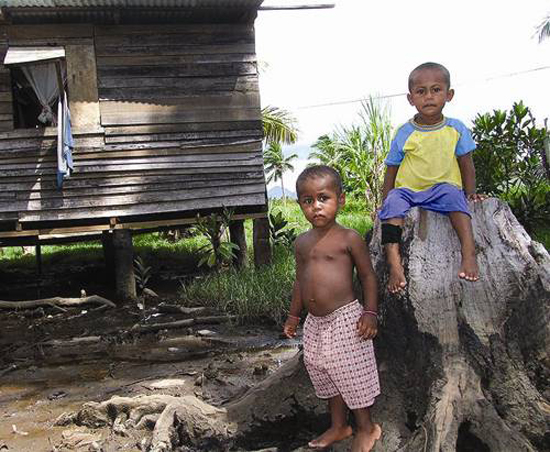
OPINION: Poverty is proving to be an intractable problem in Fiji. Various reports put poverty at 33 to 47 percent of the population. The Fiji Council for Social Services, which works with the grassroots, believes poverty could be as high as 60 percent.
What is not in dispute is that over the decades, poverty has worsened to such an extent that over 15 percent of the population (125,000) live in 200 informal and squatter settlements. Many families suffer from generational poverty, and with no hope or end in sight, young people are being lured into prostitution or drug trafficking.
Putting themselves at the mercy of pimps or dealers is often a futile, not to mention dangerous, way of trying to seek relief from the vicious cycle, but often there is no other "escape".
News media role
The news media, on its part, is duty-bound to report this major public interest issue, and Fiji’s journalists are often at the forefront in highlighting the concerns.
Media is an important player - studies show that government and public response to poverty depends on how media frames the issue. Given media’s societal responsibilities, poverty should be at the top of its reporting agenda. a
A University of Queensland colleague who was researching poverty among Indo-Fijians in the 1990s told me recently he was stunned by what he witnessed.
"I had never seen anything like it outside India," he said. Poverty in Fiji is pervasive and makes no racial distinction: the 2011 Fiji Economic Update in Fiji last month heard that there are slightly more poor indigenous Fijians than Indo-Fijians, although “landless” Indo-Fijians are the “poorest of the poor” in Fiji.
Governments, as we all know, want to help, but have other "pressing priorities," such as a new fleet of vehicles, or that long-overdue pay rise for parliament, or urgently-needed renovations and new furniture for ministerial offices.
The point is poverty does not have strong lobby groups, like the business sector might have. The nature of governments is such that on their own accord, they will only do so much for poverty. The media, through sustained and consistent coverage, can prompt governments into more substantive action by bringing the weight of public opinion to bear on them.
But the media’s role is not widely understood and is often overlooked. For example, the 1997 Fiji Poverty Report identifies NGOs as government’s development partners. But there is no mention of a media strategy in that report, or any other report since.
Structural causes
Strengths and weaknesses of media coverage: The scale and insidious nature of poverty in Fiji warrants new reporting approaches and strategies in order to prick the national conscience and prod governments into firmer action.
To be fair, Fiji’s media covers quite a bit of ground, with the squatter and land issues, low wages, call for donations, and official reports and data reported the most common themes of news reports.
But the structural causes of poverty such as job loss, lack of economic opportunity, disability and analysis of impact of government policy on poverty are often left out. Weaknesses in poverty reporting in Fiji also include:
• Event and statement-based reports that often lack analytical depth
• Standard theme – poor relate their suffering; politician suggests remedy (becomes monotonous, over time loses impact)
• Poor suffer "poverty of coverage" – not given enough opportunity to speak for themselves (e.g., Fiji Television Close-up on poverty some years ago featured panelists who all wore suits)
• Heavy reliance on official sources who have a tendency to downplay the prevalence of poverty out of some misplaced sense of shame
• Tendency for media to become proxies in the battle between rival political groups; debate becomes political football leads to misreporting and misrepresentation – e.g., land, squatter issues
• Too quick to buy into "Pacific paradise"/ "subsistence affluence" myths, which some regard as obsolete theories in light of increasing population pressures on diminishing communally-owned natural resources
• Failure to challenge "denial" or "ostrich" syndrome claims by politicians and the well-off that poverty does not exist
Advocacy role of media
Media coverage can be an assert but also a liability, with bad coverage blamed for perpetuating negative stereotypes that associate the poor with crime, laziness, ignorance, or as being responsible for their own misfortune. Furthermore, crusading or advocacy roles, a long journalistic tradition, is absent from poverty reporting in Fiji, and should be adopted by the country’s journalists.
For example, the minimum-wage debate in Fiji has been dragging on for years. Because fairer wages have the potential to reduce poverty on a fairly large scale, Fiji journalists could advocate for it through sustained and consistent coverage until a satisfactory outcome is reached.
Promotion of philanthropy: The promotion of philanthropy is another area that could be covered in order to broaden the themes. Recent media reports have it that in the United States, the rich donate 15 per cent of their income, while in Australia, the figure is less than one per cent. In Fiji the figure is not known but is likely to be even less than Australia.
Fiji’s former Prime Minister Mahendra Chaudhry once highlighted that more than 70 per cent of the national wealth was concentrated in the hands of just 10 percent of the population. This is an interesting angle the Fiji media could pursue to broaden the themes and topics of coverage to report on not only the poor, but also the rich - how much they make and what they give back to the community.
In America, if you are wealthy and not known as a philanthropist, you are a social pariah.
The American media is partly responsible for constructing this stigma, and the Fiji media could do well to emulate their colleagues from the US.
Strategic alliances
The Fiji media is typical of media in developing countries in terms of resource constraints, but this can be overcome to some extent with assistance from academia and the NGO sectors, which are well-paced to provide contacts, content, training and workshops on poverty as a specialist topic for journalists.
A well-informed media that is ably supported by stakeholders can be an effective tool for generating public support for anti-poverty initiatives.
This is a modified version of a conference paper Shailendra Singh delivered at the Fiji Economic Update in Suva and Nadi last month.



